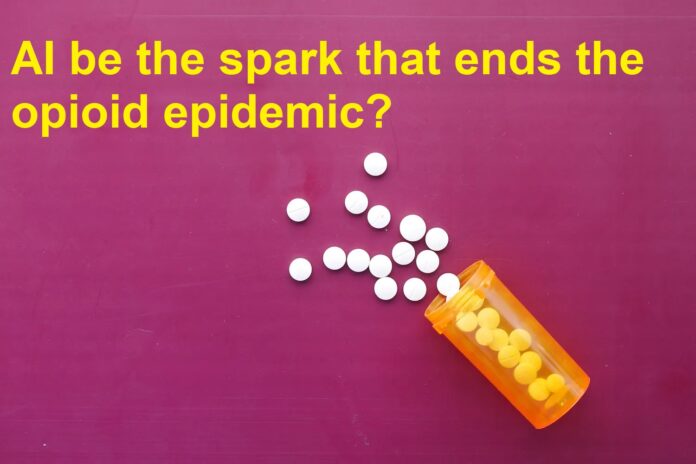In the labyrinthine struggle against the opioid epidemic, researchers and clinicians have found themselves trapped in a perpetual game of whack-a-mole. For nearly two decades, they’ve grappled with the elusive understanding of the social and systemic factors driving opioid abuse and identifying overdose hotspots. Amid these laborious efforts, healthcare’s sluggishness in adopting new technologies has cost the industry billions. But now, a glimmer of hope emerges as the question arises: Could AI be the game-changer that finally puts an end to the opioid crisis?
The Opioid Epidemic’s Grim Complexity
The opioid epidemic’s complexity mirrors the whims of a whack-a-mole game, leaving experts befuddled. Understanding why people succumb to opioid abuse and pinpointing potential overdose areas has been a relentless challenge. As clinicians strive to provide effective treatment, the epidemic’s grasp remains unyielding.
The Leap into the AI Frontier
Healthcare has never been quick to embrace technological advancements, often lagging in adopting innovations like advanced electronic health records. This reluctance comes at a high price, with reports indicating annual losses exceeding $8.3 billion. However, amidst this caution, public health researchers and biomedical engineers have been quietly engineering an AI-powered revolution in medicine, with addiction prevention and treatment as the beneficiaries.
The Unforgiving Toll
The opioid epidemic’s toll extends beyond mere statistics. Since 1999, over one million lives have been claimed by drug-related overdoses. In 2021, the United States witnessed a staggering 106,699 overdose deaths, marking one of the highest per capita volumes in its history. Approximately 75% of these tragic deaths can be attributed to opioids, encompassing prescription painkillers like Vicodin and Percocet, as well as street drugs like heroin.
Despite the immense investments by organizations such as the Centers for Disease Control and Prevention and the National Institutes of Health in outreach, education, and prescription monitoring programs, the epidemic persists stubbornly.
The Crucial Role of AI
Over the past decade, dedicated research has unveiled the murky landscape of the opioid epidemic across American communities. Yet, one grim reality looms large—there is a significant amount of guesswork involved in understanding the intricate risks drug users face. Questions linger about the types of drugs they will choose, the methods of ingestion, and whether they will have someone nearby in case of overdose.
Practitioners also grapple with the challenge of navigating federal and state guidelines on effective treatments for opioid use disorder, like suboxone. Moreover, they are confronted with the ever-evolving landscape of drug supplies, increasingly contaminated with cheap, synthetic opioids such as fentanyl, responsible for the recent surge in overdose deaths.
AI’s Quiet Revolution
While public attention has gravitated towards AI developments like ChatGPT, a quieter revolution has been unfolding in the realm of public health. This revolution leverages machine learning to identify individuals at risk of developing opioid use disorder, disengaging from treatment, or relapsing. For instance, researchers at the Georgia Institute of Technology have developed machine-learning techniques to pinpoint individuals on Reddit at risk of fentanyl misuse. Others have created tools to combat misinformation about opioid use disorder treatments, enabling timely education and intervention.
AI-driven programs like Sobergrid are at the forefront of detecting relapse risks, such as proximity to bars, and promptly connecting individuals with recovery counselors. Moreover, breakthroughs in overdose prevention are on the horizon. Purdue University’s wearable device can detect overdose signs and administer naloxone, an overdose-reversing agent, potentially saving countless lives. Innovations also include tools to identify hazardous contaminants in drug supplies, offering hope in curbing fentanyl-fueled overdoses.
The Caveats of AI
However promising, AI in this context raises concerns. Could facial recognition technology be employed to locate individuals appearing high, leading to discrimination and abuse? Already, Uber’s 2008 patent attempt to detect drunk passengers hints at this potential. Additionally, the specter of disinformation and misinformation lurks, a problem already plaguing chatbots. Malicious actors could embed incorrect information to mislead drug users about the risks.
From Fascination to Dread
The fascination with humanlike technology, depicted in films like “Metropolis” and “2001: A Space Odyssey,” has morphed into a sense of existential dread in the face of AI advancements. As we stand at the precipice of using AI to combat the opioid epidemic, the responsibility falls not only on researchers and clinicians but also on patients and the broader public. Together, we must ensure AI remains a force for good and doesn’t turn humanity’s most daunting challenges, like the opioid epidemic, into insurmountable ones.



